Establishing steady and uninterrupted growth is difficult in the restaurant industry, especially if you’re losing money because of careless business practices and inattentive management.
Financial losses can appear in practically every aspect of your business, and in this article, we’ll tell you what the reasons for those leaks might be.
So, if you’re a restaurant owner who wants to stop and prevent losses, read on and learn how to put a tight seal on your finances.
High Employee Turnover
Retaining employees has long been one of the most challenging aspects of owning a restaurant.
That’s because the hospitality industry has one of the highest employee turnover rates in today’s labor market.
According to a recent study, the average tenure of hospitality employees is only 110 days, just a little over three months.
And this applies to both front-of-house and back-of-house workers, as the same research has shown an almost even split between their turnover rates.
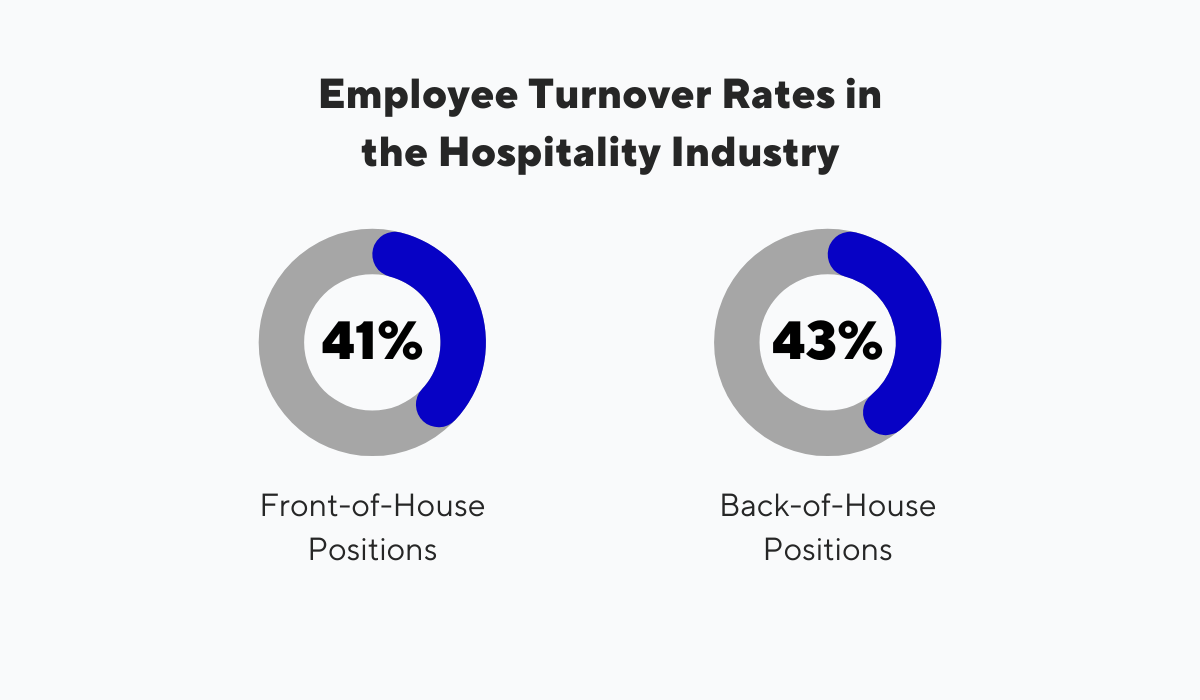
Illustration: Tablein / Data from: 7Shifts
These turnover figures can do some serious financial harm because replacing a capable employee isn’t as easy as filling an empty slot.
Viable candidates need to be sought out, properly interviewed and/or auditioned, onboarded, and trained before their productivity reaches the level of the employee you lost.
All of these activities cost money, and all the while, you’re losing revenue because you’re one employee short.
A different study has calculated that the cost of losing one employee and hiring another amounts to a whopping $5,864.
Here’s a split of those costs to give you an idea of how many resources go into replacing your staff.
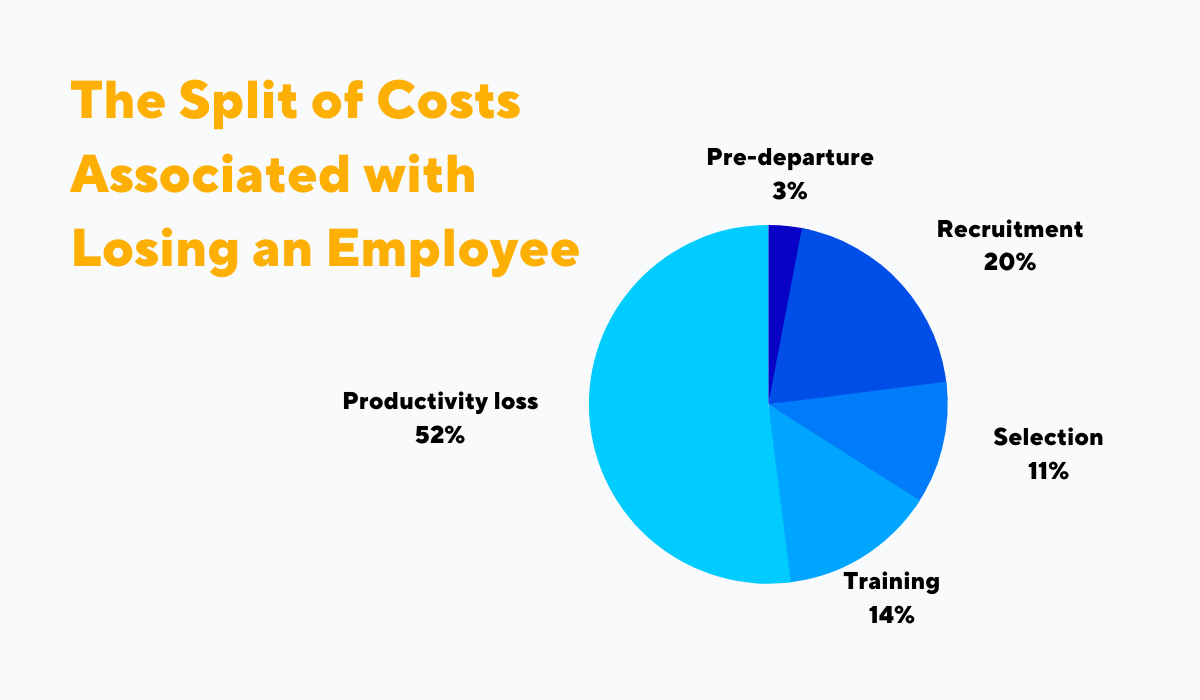
Illustration: Tablein / Data from: Cornell University
The main culprit for this inordinately high turnover rate are the unusual, sometimes even extreme, working conditions that come with a career in hospitality.
In that sense, current and ex-employees often cite poor wages, punishing working hours, lack of safety, and rude customers as their reasons for leaving the industry.
Here’s just one example:

Source: Reddit
Therefore, if you want to put a stop to high turnover rates (and the financial damage that comes with them), these are the areas you might want to take a look at.
You’ll want to ensure that your staff is adequately paid and that you have enough staff members for each shift so that your servers and kitchen workers don’t get overwhelmed.
That last point should also help you eliminate conflict between guests and staff and ensure a safer work environment.
In the restaurant business, you’ll often have to spend money to earn money (or stop losing money, in this case).
Investing in your staff and their working conditions should help you reduce the costs associated with high employee turnover rates.
Poor Inventory Management
The day-to-day operations of a restaurant are dynamic and fast-paced. Dozens of meals are prepared, and even more drinks are served as guests ebb and flow through the dining hall.
In those circumstances, it’s easy to lose track of how inventory is spent, as long as the guests are happy and fully satisfied.
However, poor inventory management usually results in food waste, which can add up and create enormous unnecessary costs for your restaurant.
This isn’t an exaggeration. According to the data from REfed, $444 billion worth of food was wasted globally in 2021.

Source: ReFED
And in 2022, 38% of the 235 million tons of food was unsold or uneaten across the US.
There are a couple of bad inventory management practices at restaurants that contribute to these figures.
Here are some examples:
- No system for stocking food, which leads to items being lost or spoiling because they aren’t readily available to staff
- Imprecise recipe instructions that don’t detail the exact amounts of ingredients, leading to overconsumption of inventory
- Not tracking order history, which results in incorrect amounts of inventory ordered from suppliers that end up unused
It logically follows that restaurants that focus on inventory management stand to save a lot of food from going to waste and, consequently, prevent financial damage to their business.
One easy practice you can pick up immediately is the first in, first out (FIFO) method of stocking your inventory.
This method simply means stocking newer items in the back of your shelves, so they don’t get used before the older items with an earlier expiration date.
You can prevent a lot of food spoilage that way.
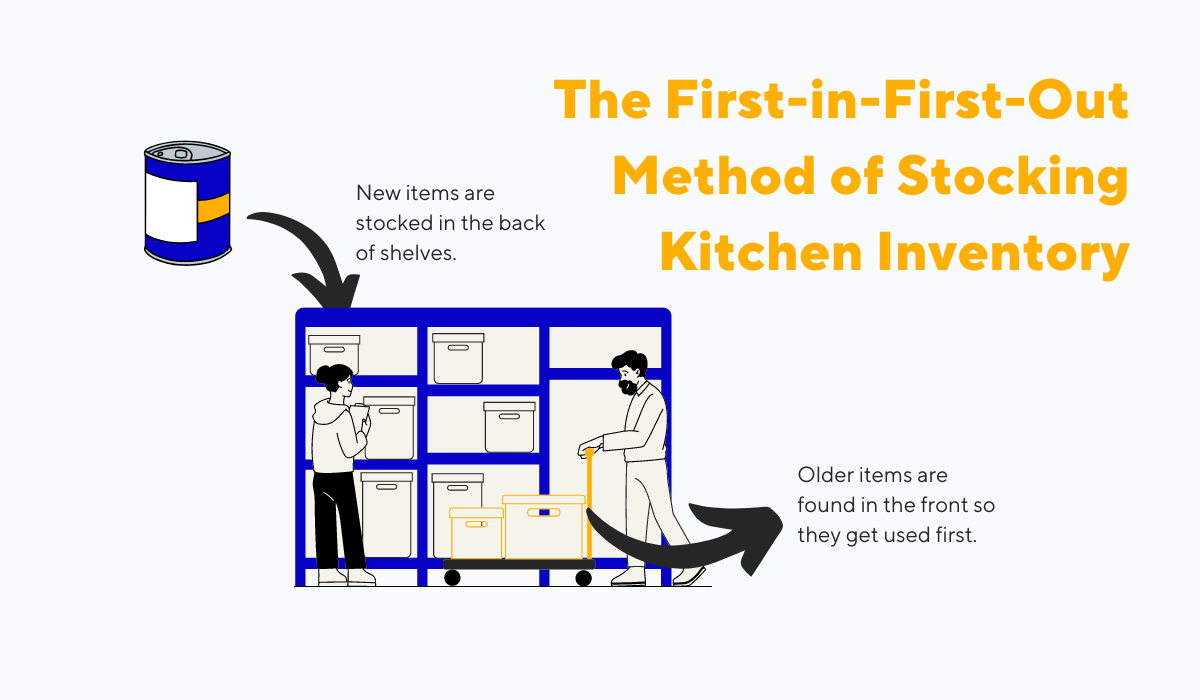
Source: Tablein
Also, make sure your kitchen staff works with detailed recipe cards where the exact amount of every ingredient is provided, and make sure your kitchen is stocked with measuring and portioning instruments.
These include, but are not limited to, scales, measuring cups, and various ladles, and scoops (pictured below).
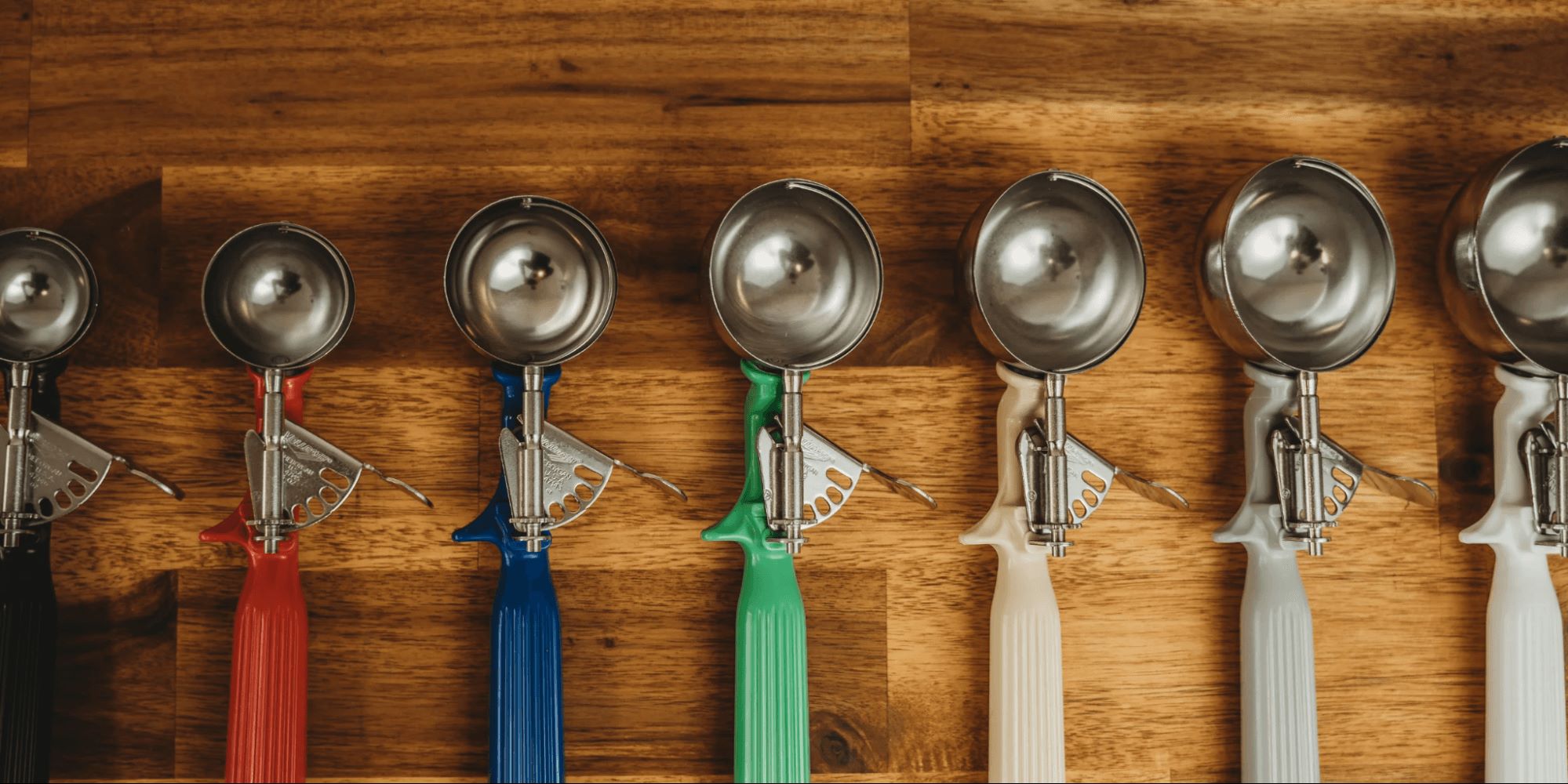
Source: Chef Equipment
That, along with some training and instruction, should prevent over-portioning and excessive ingredient use.
These might seem like small interventions, but keep in mind that a restaurant serves hundreds of meals every year.
Systemizing how inventory is stocked and used will help you conserve ingredients and prevent waste which will add up to large financial savings over time.
Long Wait Times for Tables
Table waiting times have an impact on your revenue in more ways than one.
Firstly, when guests wait too long to be seated, that slows down your table turn rate, and you end up with less revenue at the end of the night.
Here are some benchmarks for table turn rates with respect to different restaurant types. If you’re falling behind these figures, that could indicate a problem.
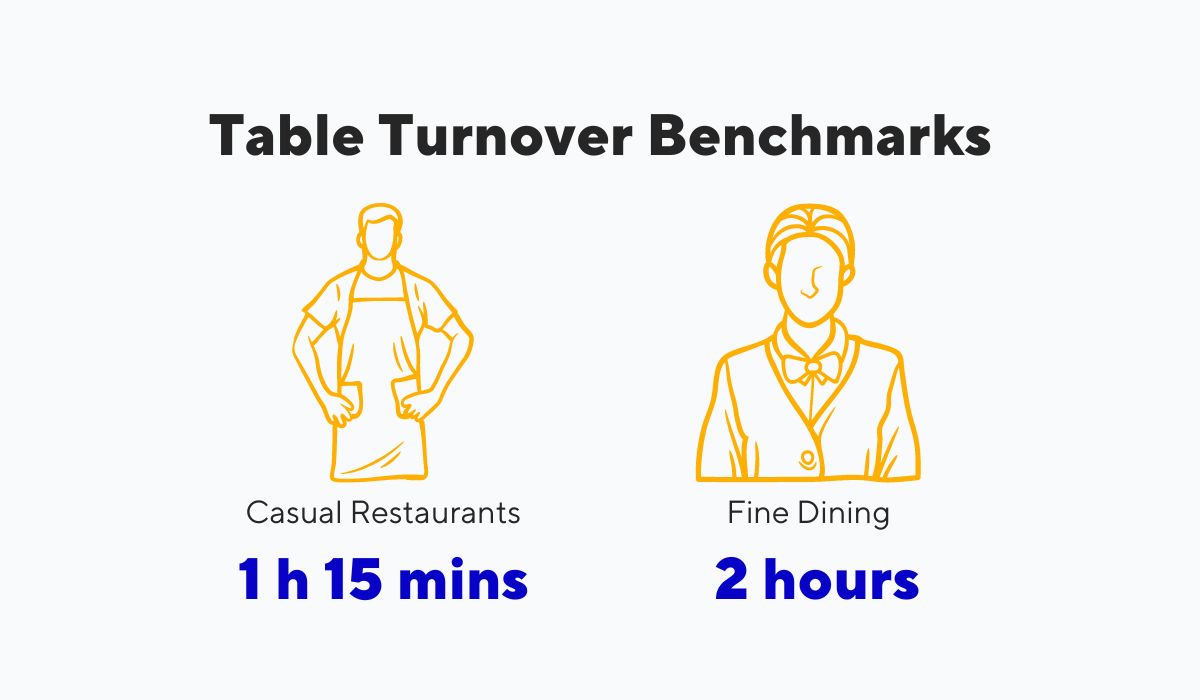
Illustration: Tablein / Data from: Reinhart
Secondly, when guests are made to wait, they can become frustrated and leave the restaurant in search of better service.
At that point, you’ve lost the entire value of the check this guest would have brought you.
There are a couple of reasons why waiting times can extend beyond what’s acceptable to guests, but one of the most common is guests being late for their reservations.
This causes a scheduling disruption because the next occupants of the table can’t be seated on time, which pushes back the entire schedule for the evening and leads you to lose revenue.
A good solution for this is to implement a reservation system with features specifically designed to remind guests of their reservations and encourage them to come in on time.
If you’re using an online table booking system, such as Tablein, this is achieved with automated notifications (SMS and email) that display the booked date and time for the guest and remind them of the reservation ahead of their chosen time slot.
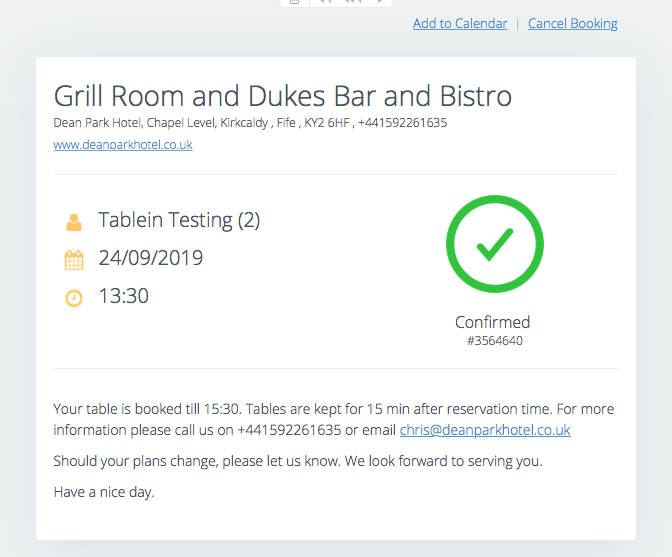
Source: Tablein
This makes it more likely that the guest will arrive and be served on time, reducing the possibility of schedule disruptions, and cutting down on waiting times.
As for walk-in guests who arrive without a reservation when your dining area is full,
Tablein has a waitlist feature that will enable you to take down the guest’s name and contact, and fire off an automatic message letting them know the moment their table becomes available.
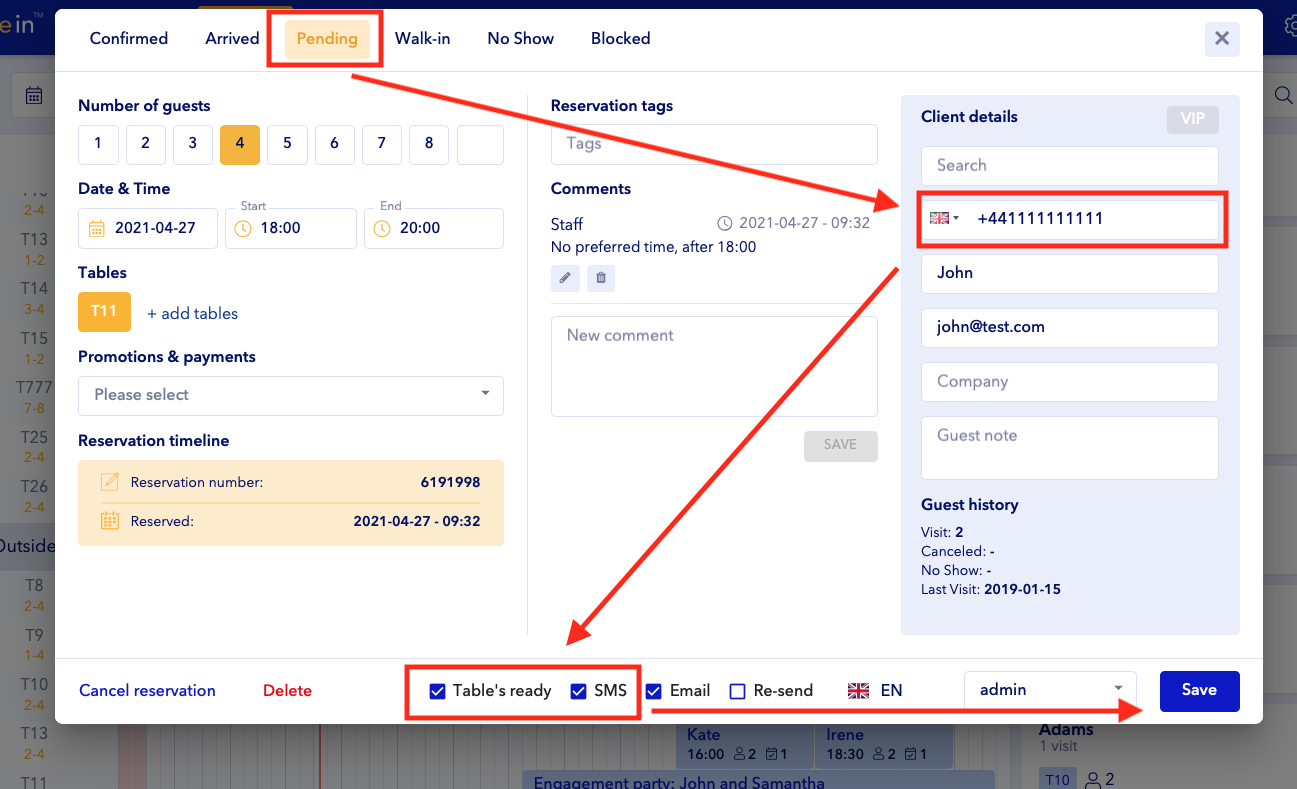
Source: Tablein
That way, guests don’t need to wait around and can instead have a drink at a nearby bar or take a stroll around the area, assured they will be notified the moment their table becomes available.
This increases the chances of retaining such guests because they aren’t as likely to leave and find a different restaurant.
Restaurants make their bread and butter by serving a certain number of guests every business day.
If those wait times extend too much, that easily translates to lost revenue. Thankfully, you can use a table booking system to ensure a good flow of customers through your dining hall.
Low Check Averages
As we said in the last section, a restaurant can only serve so many customers simultaneously. So, what happens when the guest’s check for that allotted time carries a low figure?
Well, you’re losing out on revenue and sacrificing the profits you need to grow your business.
If this is a rare occurrence, you should be fine. However, if the checks created in your restaurant are consistently low, that could put you in financial peril, and the situation should be rectified.
But how can you know where you stand in this regard?
Easy. You just need to calculate your check average. This is done by dividing the sum value of your checks by the number of checks issued in that period.
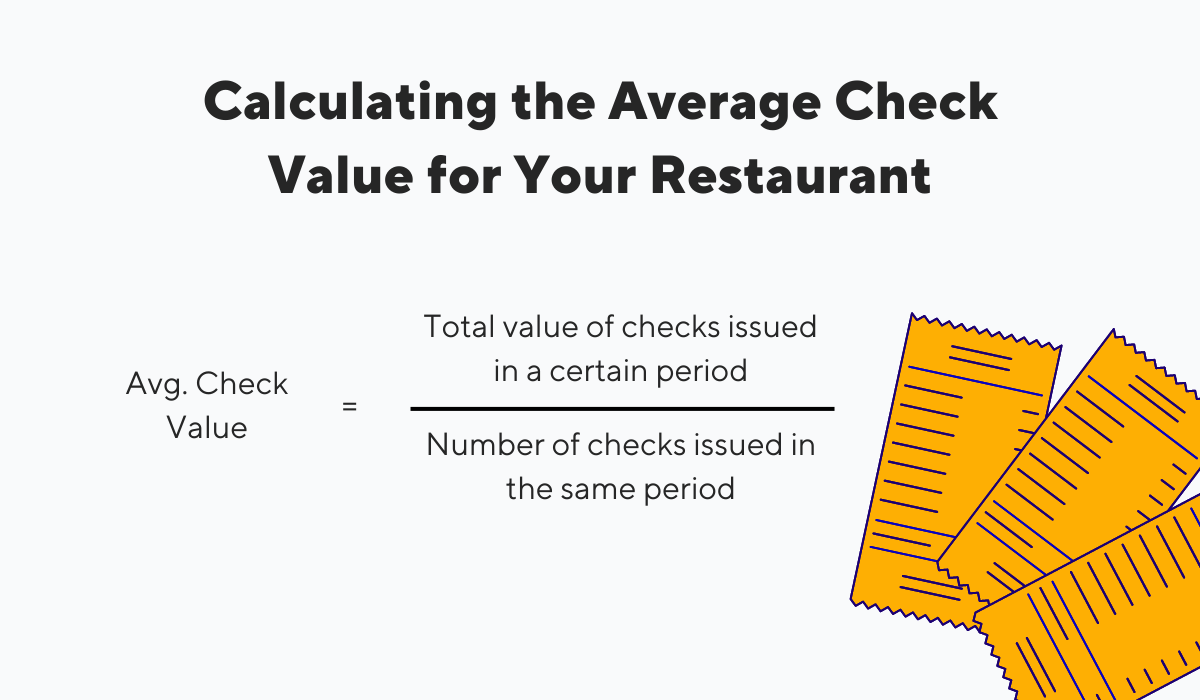
Source: Tablein
The resulting figure will tell you how much you’re earning with each table turn.
So, for example, if you’re operating a fine dining restaurant, but your check averages consistently hover below $100 or $70, you’re not capturing the revenue appropriate for this kind of establishment.
A quick fix for this is simply raising your prices to earn more with every check, but this might upset your customers, especially your most loyal ones who have grown accustomed to paying a certain amount for their favorite dishes.
The better option here is to train your staff to upsell and cross-sell your menu.
For instance, you can instruct your servers to always suggest starting with an appetizer, and offer dessert and coffee before the guest asks for the check.
These simple cross-selling methods should help you increase the value of individual checks.
You can also periodically hold staff tastings and present menu items to serving staff so your servers can competently describe and recommend your best dishes to customers and thus convince them to try the pricier items on your menu.
For example, the Taste Cafe in Ashburton, New Zealand, holds a tasting for their staff seasonally, as new dishes are introduced to the menu.
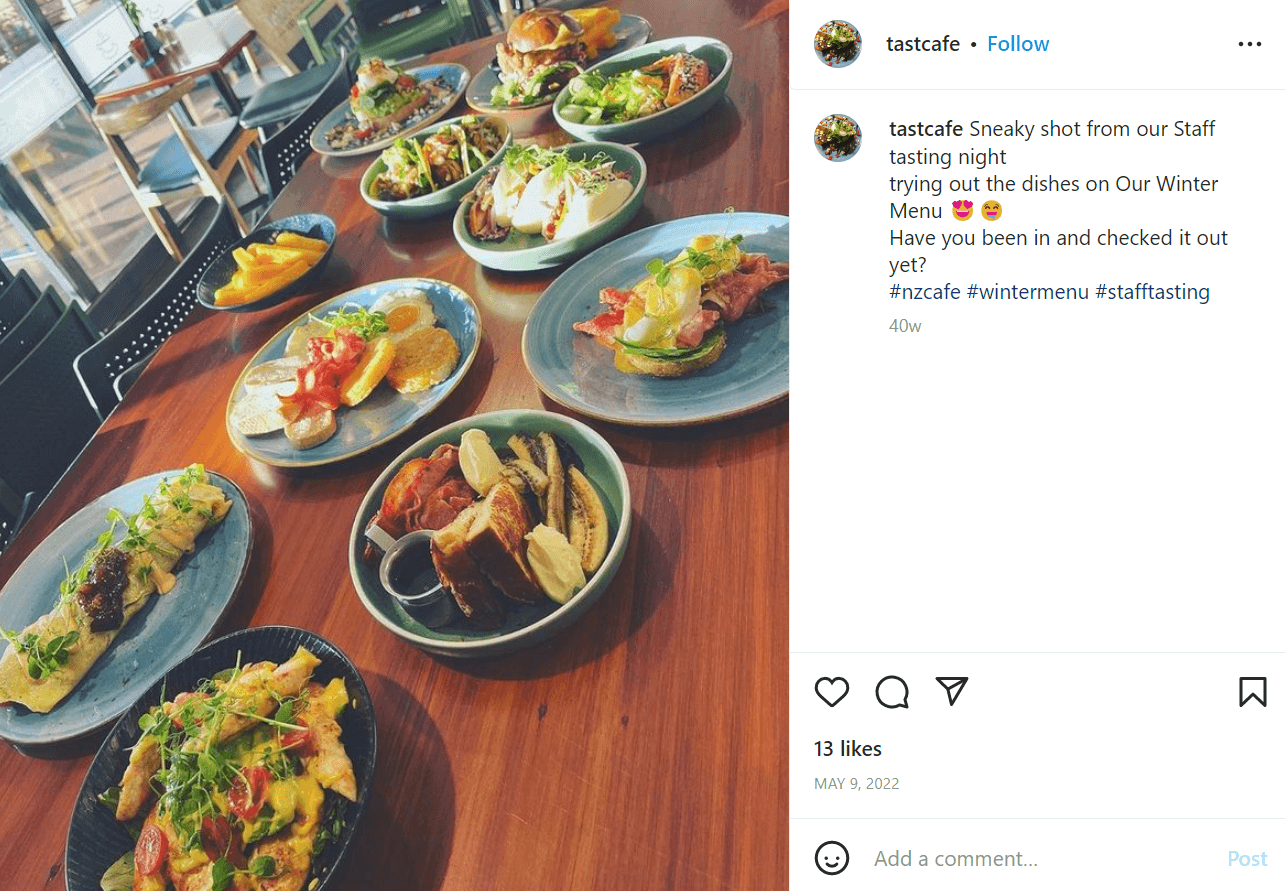
Source: Taste Cafe on Instagram
Armed with a couple of strong cross-selling and upselling strategies, you should have no problem raising your check averages and thus prevent another cause of money loss at your restaurant.
Not Enough Loyal Customers
Returning customers spend a lot more money in your restaurant than first-time guests who don’t come back. This is because loyal guests visit you time and again to enjoy your food and service.
Therefore, in a manner of speaking, if you’re not inspiring loyalty in your customers, you’re losing money because your guests’ lifetime value doesn’t grow beyond that first visit.
In this sense, lifetime value means all the revenue a potential guest will bring you, provided you keep them satisfied enough to keep coming back.
The most basic way to build a loyal consumer base is to keep every aspect of your business in top shape. That includes:
- Quality food
- Reasonable prices
- Friendly, helpful staff
- Great ambiance
- A high standard of cleanliness and safety
But you can also go beyond that by taking special care of your returning customers and rewarding their loyalty.
A good way to do that is by maintaining a guest book, so you can keep track of who your most loyal customers are, and act accordingly.
If you’re using a good table booking system, you may have access to an automatic guest book that records every customer and counts how many times they’ve made a reservation and visited the restaurant.
In Tablein’s reservation system, those guests who have visited you a number of times can be given a VIP designation, which is visible to your staff so they can adequately prepare for this guest.
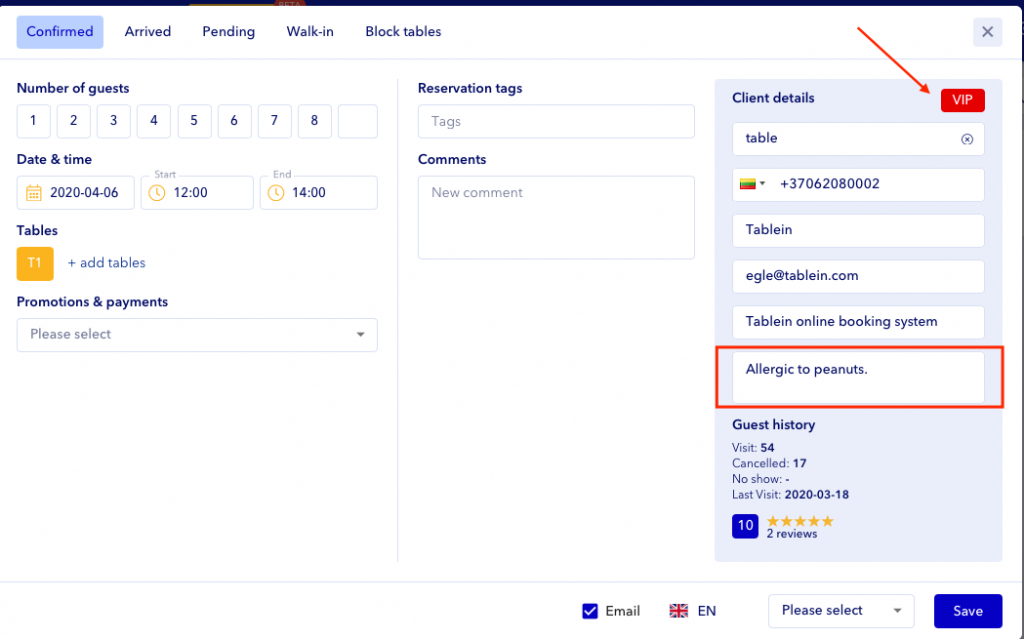
Source: Tablein
Once this loyal customer turns up, you can take special care of them to show them your appreciation.
You can, for example:
- Greet them as they come in and address them by name
- Make sure their favorite table is ready for them
- Treat them to a glass of champagne as they decide on their order
- Apply a loyalty discount to their check
This will no doubt reaffirm their decision to visit your establishment every time they’re celebrating a special occasion or simply craving something from your menu.
Loyal customers deserve special care.
Make sure you provide it, and you’ll be able to count on this stream of revenue for a long time instead of losing it to another restaurant with better customer service.
Conclusion
Over the course of this article, we’ve learned that a couple of poor business practices can result in financial leaks that prevent you from generating good profits and growing your business.
These practices can involve your staff, inventory, menu prices, and even customer service.
Fortunately, there exists a plug for every one of these leaks.
Once you discover the reasons behind your financial losses, take advantage of the tips and tricks we’ve provided you with in this article to eliminate them and improve your financial outlook.
Get a 30-day Exclusive Trial
As a Tablein blog reader, you’re eligible for an exclusive 30-day free trial to experience our simple reservation solution for your restaurant.
Enter your business email, and we’ll send you all the steps needed to create your account.
Share this
You may also like
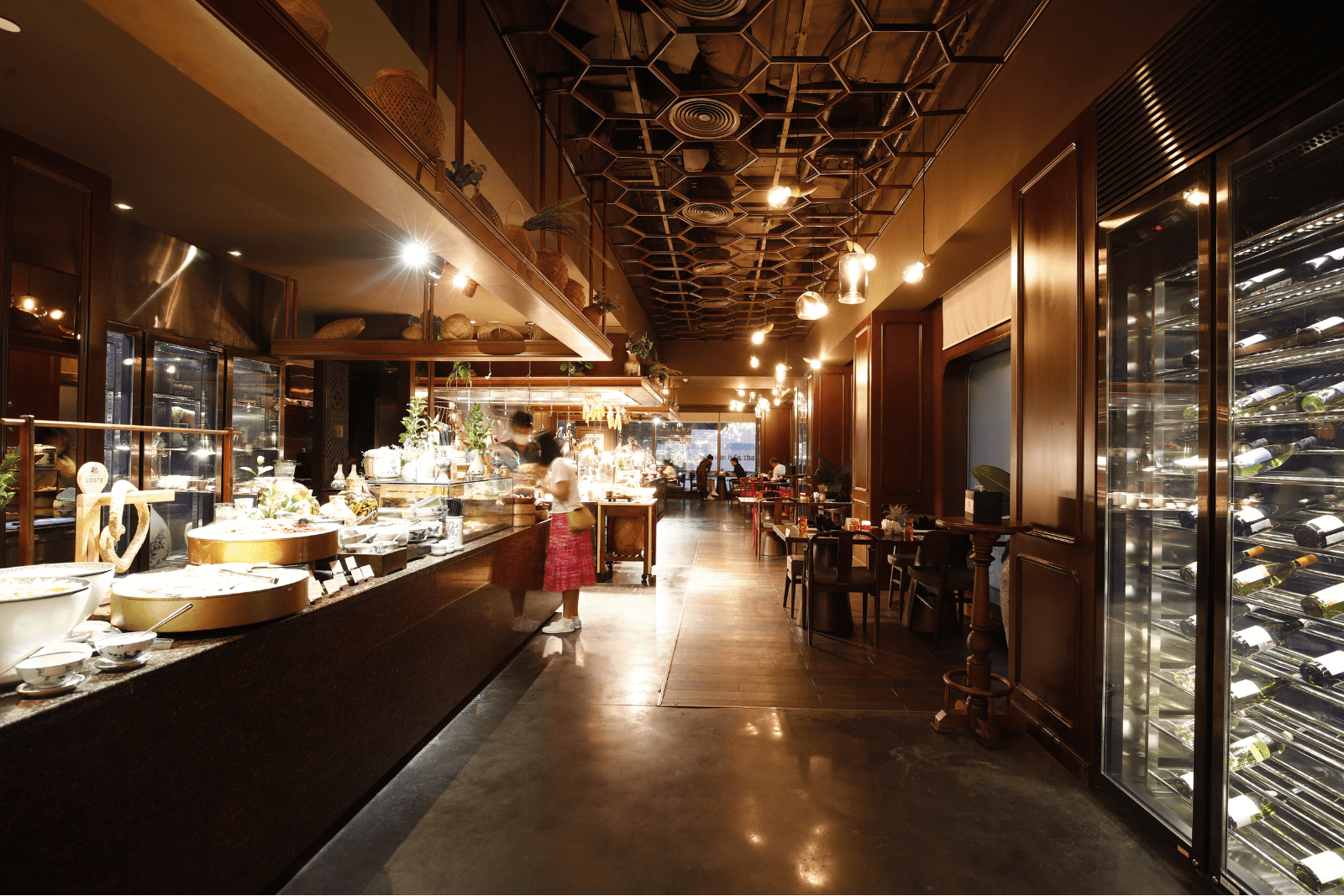
Top Restaurant Management Challenges (and Solutions)

5 Tips for Increasing Your Restaurant’s Table Turnover Rate
